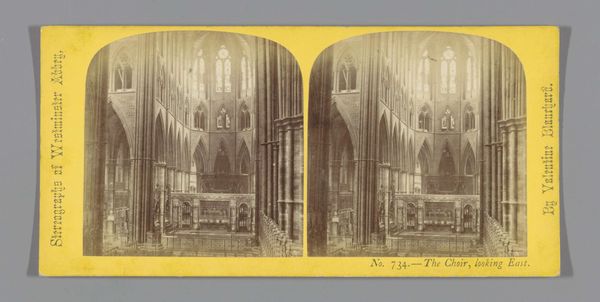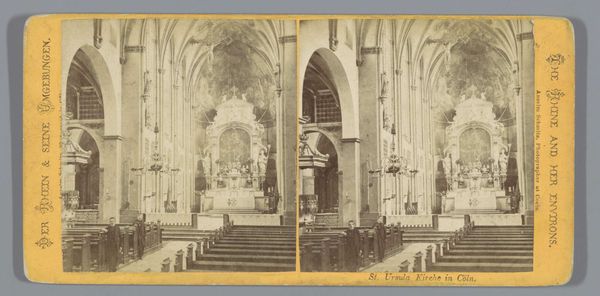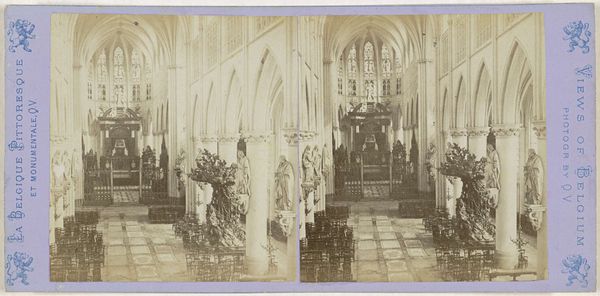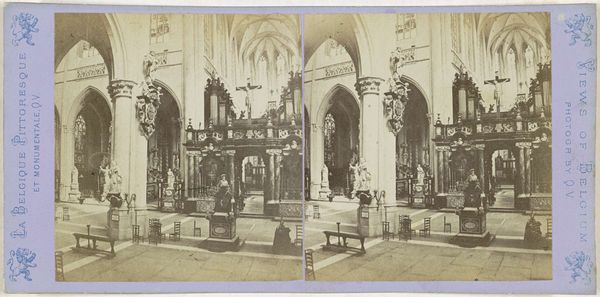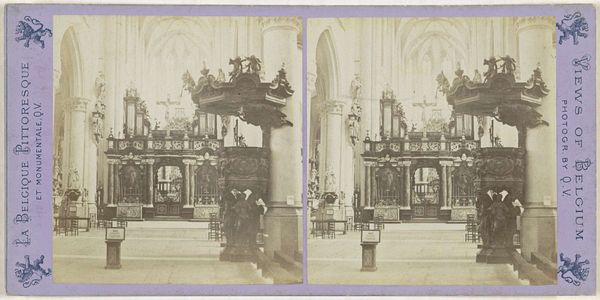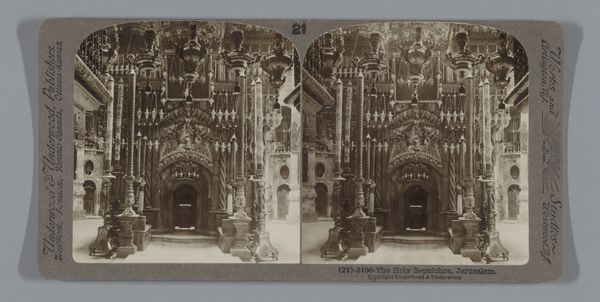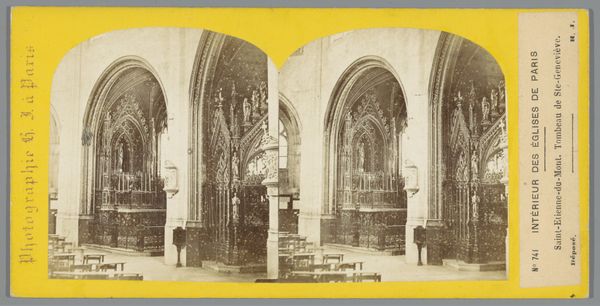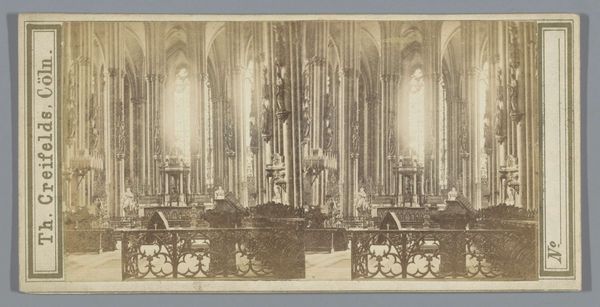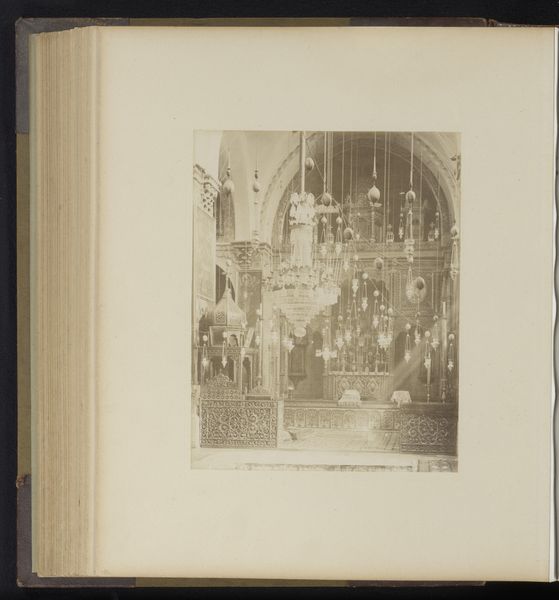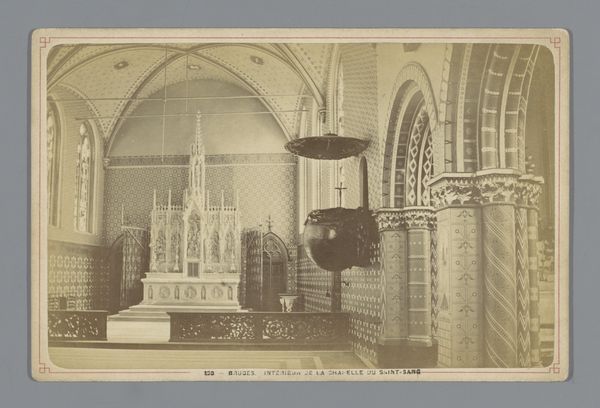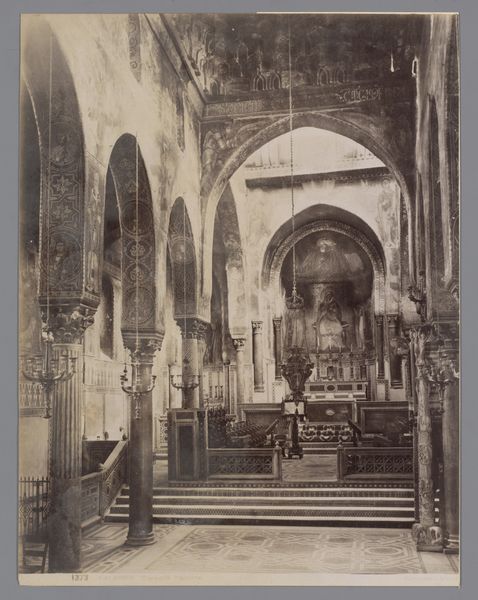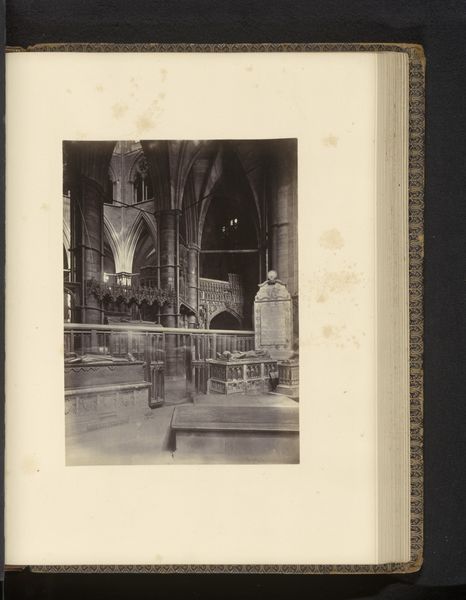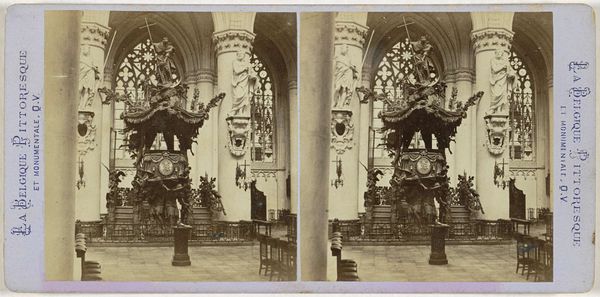
print, photography
# print
#
photography
Dimensions: height 88 mm, width 177 mm
Copyright: Rijks Museum: Open Domain
Editor: This stereoscopic photograph, titled "Interior of the Armenian Cathedral of St. James, Jerusalem," dates from between 1900 and 1905. I find the layering of light fixtures fascinating, almost dizzying. What do you see in this image? Curator: I see an example of the burgeoning market for religious tourism in the late 19th and early 20th centuries. Stereoscopic images like this, mass-produced by companies like Underwood & Underwood, were a popular way for people to “visit” faraway places from the comfort of their homes. The cathedral itself becomes a commodity. Editor: So it's less about art and more about accessibility? Curator: It's about both, isn’t it? The photograph flattens and repackages a complex sacred space for consumption. How does this impact our understanding of the Armenian Christian community and their practices? Were they active in creating such representations of their own faith, or was it largely shaped by external, Western perspectives? Editor: That’s a really good point. I hadn’t considered who was behind the camera, so to speak. Curator: Think about the composition, the way the photographer chose to highlight the chandeliers while potentially overlooking other aspects of the space. What narrative is being prioritized, and who is the intended audience for that narrative? These images are always the result of careful construction and intention, reflecting particular viewpoints of faith, tourism and visual culture. Editor: This really reframes how I view these seemingly straightforward historical photographs. Thanks, I now have some really solid things to think about. Curator: And I will keep my eye out for locally-produced stereoscopic photographs in Jerusalem that represent Armenian's point of view on their culture and traditions.
Comments
No comments
Be the first to comment and join the conversation on the ultimate creative platform.
